I'm trying to use this registry hack I found online:
;Disables F1 key - Help and Support - in Windows 10
;Ramesh Srinivasan, Winhelponline.com
[HKEY_CURRENT_USER\SOFTWARE\Classes\Typelib\{8cec5860-07a1-11d9-b15e-000d56bfe6ee}\1.0\0\win32]
@=""
[HKEY_CURRENT_USER\SOFTWARE\Classes\Typelib\{8cec5860-07a1-11d9-b15e-000d56bfe6ee}\1.0\0\win64]
@=""
When I run it as a .reg command via Windows Explorer and watch the registry with regedit, it works as intended. Removing it is another registry file that simply removes the \0 subkey (and win32 and 64 with it). I'm trying to emulate this function with C# in a Winform using .net CORE:
private void CheckF1()
{
// Registry data from ;Ramesh Srinivasan, Winhelponline.com
RegistryKey F1key = Registry.CurrentUser.OpenSubKey(@"SOFTWARE\Classes\TypeLib\{8cec5860-07a1-11d9-b15e-000d56bfe6ee}\1.0\0");
// EGADS! It's active!
if (F1key == null)
{
fckF1RestoreBtn.Enabled = false;
fckF1KillBtn.Enabled = true;
fckF1Status.Text = "That creepy bugger is waiting and watching.";
}
else
{
fckF1RestoreBtn.Enabled = true;
fckF1KillBtn.Enabled = false;
fckF1Status.Text = "The F1-Help function had been put in it's place.";
}
}
private void fckF1KillBtn_Click(object sender, EventArgs e)
{
Registry.CurrentUser.CreateSubKey(@"SOFTWARE\Classes\Typelib\{8cec5860-07a1-11d9-b15e-000d56bfe6ee}\1.0\0\win32");
Registry.CurrentUser.CreateSubKey(@"SOFTWARE\Classes\Typelib\{8cec5860-07a1-11d9-b15e-000d56bfe6ee}\1.0\0\win64");
CheckF1();
}
private void fckF1RestoreBtn_Click(object sender, EventArgs e)
{
Registry.CurrentUser.DeleteSubKeyTree(@"SOFTWARE\Classes\Typelib\{8cec5860-07a1-11d9-b15e-000d56bfe6ee}\1.0\0");
CheckF1();
}
Weirdly the code "sees" a setting and responds like it should. Even to the point that whichever toggle position it was in on close it remembers when I load the file again. It's almost like it's playing along to screw with me. Regardless, when I watch the registry, none of my code has any actual effect though by all appearances it seems to work otherwise (it doesn't actually of course because the registry change isn't happening).
NOTE: I have already updated my manifest file for the project to include elevated permissions:
<requestedExecutionLevel level="highestAvailable" uiAccess="false" />
Here's the breakpoint on the test statement to see if the subkeys are there that shows they are:

Meanwhile the registry location for the exact path shown in the debug doesn't have the 1.0\0 path at all:

I don't know how the code is reading phantom values. Someone closed my previous question pointing to another answer that didn't have any effect (Registry key deleted but still getting value from registry c#):
- "Prefer 32 bit" was never checked for my project in the first place
- Modifying my code as recommended had no effect
var key = RegistryKey.OpenBaseKey(RegistryHive.CurrentUser, RegistryView.Registry64)
.OpenSubKey(@"SOFTWARE\WOW6432Node\Classes\TypeLib\{8cec5860-07a1-11d9-b15e-000d56bfe6ee}\1.0\0");
- Adding "Wow64Node" to the path makes no difference in execution.
EXPECTED BEHAVIOR
Checking to see if the HKEY_CURRENT_USER\SOFTWARE\Classes\Typelib{8cec5860-07a1-11d9-b15e-000d56bfe6ee}\1.0\0 path is present should return null if the \0 path is not present
Adding and removing the subkeys should show in the registry